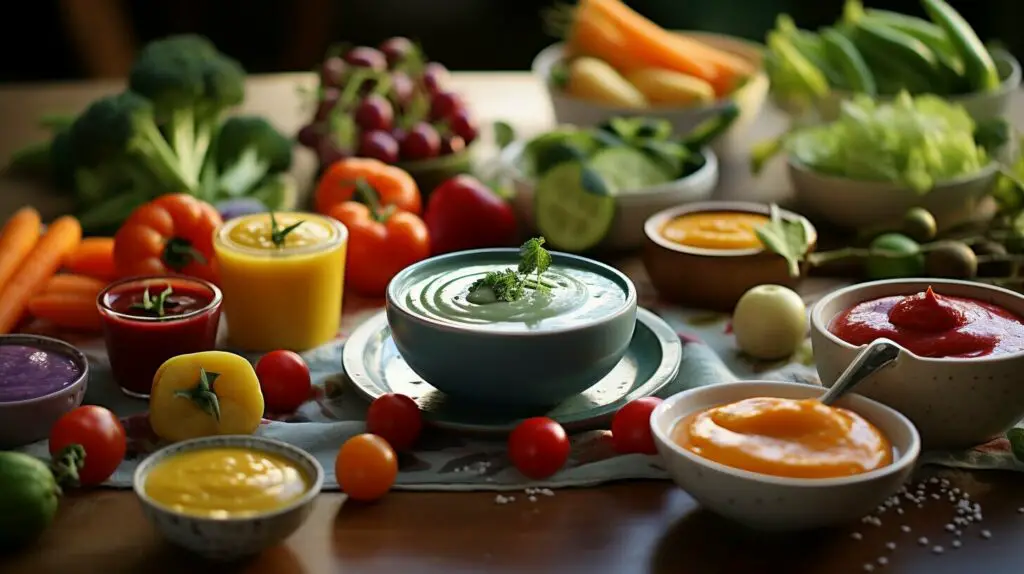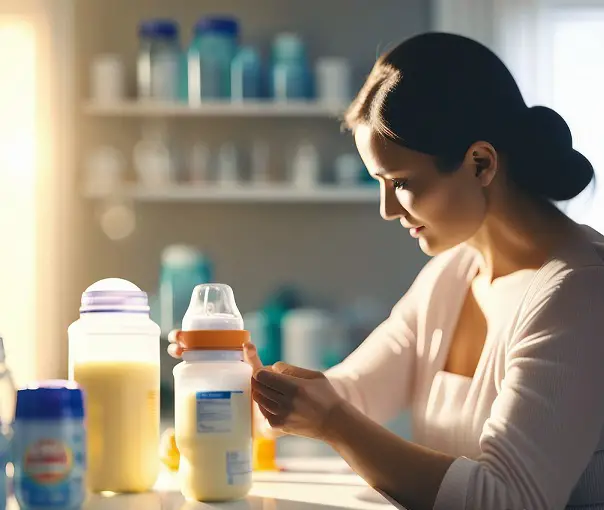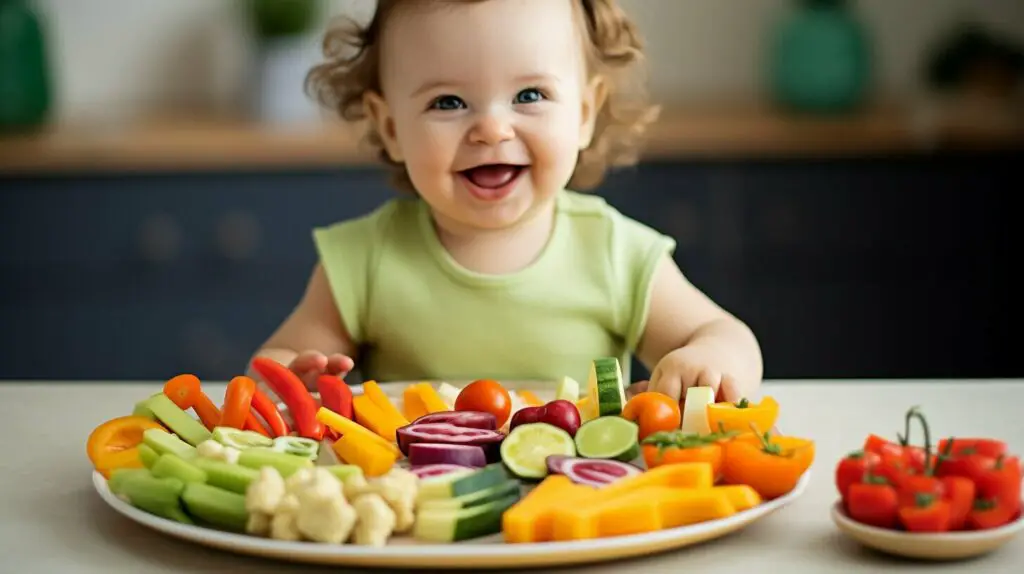As a new parent, you may be concerned about the possibility of your baby developing blisters on their lips from bottle feeding. While this is a valid concern, it’s important to understand the causes, symptoms, and prevention methods for this issue.
In this section, we will explore the topic of babies getting blisters on their lips from bottle feeding. We will discuss the concept of suck blisters and their prevalence in bottle-fed babies. Additionally, we will cover the potential causes of suck blisters and how to differentiate them from other types of lip blisters.

Key Takeaways:
- Babies can develop suck blisters on their lips from bottle feeding
- Suck blisters are common in bottle-fed babies
- Possible causes of suck blisters include friction and latching problems
- Symptoms of suck blisters may include redness and discomfort around the lips
- Prevention methods include frequent breaks during feeding and proper burping techniques
Understanding Suck Blisters in Bottle-Fed Babies
If you’re a new parent, you may have heard of suck blisters or even encountered them yourself. Suck blisters are small fluid-filled bumps that can appear on a baby’s lips, usually caused by prolonged or aggressive sucking on a bottle.
It’s important to note that suck blisters are not harmful to your baby’s health, but they can be uncomfortable and cause pain. These blisters can also make it difficult for your baby to feed properly, which can lead to frustration and fussiness.
So why do suck blisters occur in bottle-fed babies? The answer lies in the mechanics of bottle feeding. When a baby sucks on a bottle nipple, the pressure from their lips and tongue creates friction against the nipple and the roof of their mouth. Over time, this friction can cause blisters to form on your baby’s lips.
Suck blisters are more common among bottle-fed babies than breastfed babies, as the mechanics of breastfeeding are different. However, breastfed babies can still develop blisters on their lips if they have a poor latch or if their mother has a strong let-down reflex.
How to Identify Suck Blisters in Bottle-Fed Babies
Suck blisters are generally easy to identify. They appear as small, fluid-filled bumps on your baby’s lips. These blisters may be clear or yellowish in color and can be painful to the touch. Your baby may also exhibit signs of discomfort, such as fussiness or reluctance to feed.
If you suspect that your baby has suck blisters, it’s important to seek medical advice. Your pediatrician can examine your baby’s lips and suggest appropriate treatment options to alleviate discomfort and prevent further blistering.
Causes of Suck Blisters in Bottle-Fed Babies
If you notice your baby has developed blisters on their lips due to bottle feeding, it could be due to several reasons. In this section, we will discuss the common causes of suck blisters in bottle-fed babies and what you can do to prevent them from developing.
1. Friction: When a baby sucks on a bottle, it creates friction between the nipple and the lips, which can cause irritation and eventually lead to blisters.
2. Poor latching: If the baby is not latching onto the bottle correctly, it can lead to the development of suck blisters. When not latched properly, the baby tends to suck harder, causing more friction and increasing the risk of blisters.
3. Allergy to the bottle materials: Some babies may develop an allergic reaction to the materials used in the bottle’s construction, leading to the development of blisters.
4. Damaged nipples: If the bottle nipple is damaged or worn out, it can irritate the baby’s lips, causing blisters.
5. Medications: Certain medications that your baby may be taking can cause dryness of the lips, leading to the formation of blisters.
If you notice any of these causes at play, you can take steps to reduce the risk of blisters forming. Ensure the bottle nipple is intact and in good condition, and position the bottle and the baby correctly to help prevent friction. If your baby is still developing blisters despite taking preventative measures, consult your pediatrician to rule out any underlying medical issues that may be contributing to the problem.
Symptoms of Suck Blisters in Bottle-Fed Babies
If you’re a new parent, you might be wondering if the little blisters on your baby’s lips are normal. Suck blisters can appear as small bumps or bubbles on the lips, and they’re a common occurrence among bottle-fed babies.
While they can look alarming, suck blisters are usually harmless and will go away on their own with time. However, they can cause discomfort for your little one and may interfere with feeding.
Here are some common symptoms of suck blisters in bottle-fed babies to look out for:
- Blisters or bumps on the lips after feeding
- Fussy or irritable behavior during or after feeding
- Difficulty latching or sucking
- Spitting up frequently
- Refusing to feed
If your baby is exhibiting any of these symptoms, it’s important to seek guidance from a healthcare provider. They can help diagnose the cause of the blisters and provide appropriate treatment.
In the next section, we’ll go over how to differentiate suck blisters from other types of lip blisters in babies.
Differentiating Suck Blisters from Other Causes of Lip Blisters
As a parent, it’s important to be able to differentiate between suck blisters and other types of lip blisters that your baby might experience. Some common causes of lip blisters in babies include oral thrush, impetigo, and cold sores. Here are some key distinctions to help you identify suck blisters:
| Suck Blisters | Other Lip Blisters | |
|---|---|---|
| Appearance | Small, fluid-filled blisters located on the upper or lower lip | May appear as clusters of small blisters on the lips or around the mouth |
| Cause | Result from strong suction and friction during bottle feeding | Caused by viral or bacterial infections |
| Pain and Discomfort | May cause mild discomfort during feeding | Often painful or itchy |
| Healing Time | Typically heal within a few days | Can take up to two weeks to heal |
If you suspect your baby may have suck blisters, it’s important to consult with your pediatrician to confirm the diagnosis and rule out other possible causes of lip blisters. Accurate diagnosis is essential for appropriate treatment and speedy recovery.
Treatment and Prevention of Suck Blisters in Bottle-Fed Babies
If your baby develops suck blisters from bottle feeding, there are a variety of treatment options available. In most cases, these blisters will heal on their own with time and patience. However, there are some steps you can take to speed up the healing process and prevent future blisters from developing.
Treatment options
If your baby’s suck blisters are causing discomfort or interfering with feeding, you may want to consider the following treatment options:
- Apply a warm, damp cloth to the affected area several times a day to help soothe the skin and promote healing.
- Gently massage the blisters to encourage drainage and prevent them from becoming infected.
- If your baby is in pain, you can give them infant acetaminophen or ibuprofen as directed by your pediatrician.
It’s important to note that you should never try to pop or drain suck blisters on your own. This can lead to infection and additional discomfort for your baby.
Prevention techniques
Preventing suck blisters in bottle-fed babies is all about finding the right technique and ensuring that your baby is comfortable during feeding. Here are some tips and techniques that can help:
- Make sure that your baby is latched properly and that their mouth is positioned correctly on the nipple.
- Try using a different position for feeding, such as the football hold or the cradle hold.
- Experiment with different types of bottles and nipples to find the one that works best for your baby.
- Feed your baby slowly and take frequent breaks to allow them to rest and swallow.
- Use a bottle with a slow flow nipple to prevent your baby from sucking too hard.
By following these tips and techniques, you can help prevent future suck blisters and create a more comfortable feeding experience for your baby.
Conclusion
Caring for a new baby can be overwhelming, and the possibility of them developing suck blisters from bottle feeding can add to the stress. However, armed with the right information, you can take steps to prevent and treat these blisters. Always ensure a secure latch and reduce friction during feedings. If your baby does develop suck blisters, keep the area clean and dry and avoid any irritants. Consult your pediatrician if the blisters persist or become infected.
Remember, recognizing and addressing suck blisters can make feedings more comfortable for your baby and reduce any anxiety you may be feeling as a new parent. As always, consult with your healthcare provider if you have any concerns or questions.




